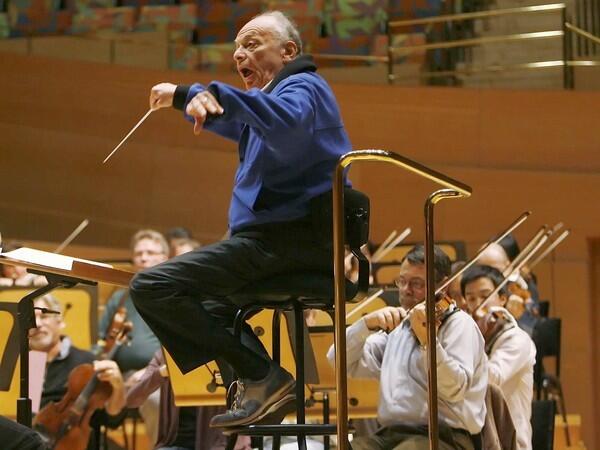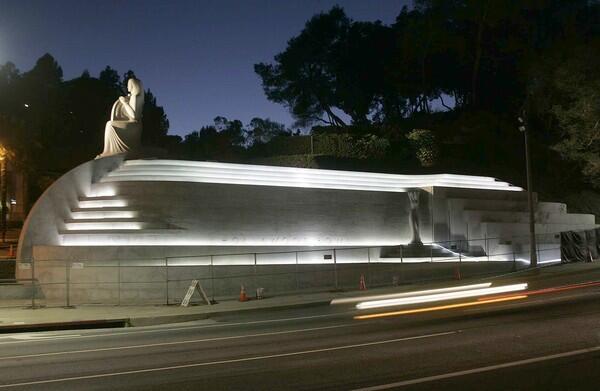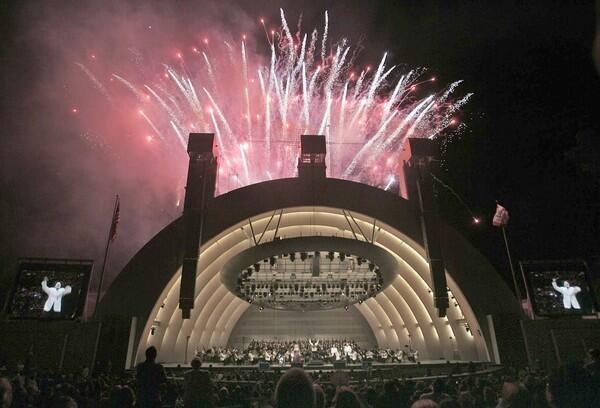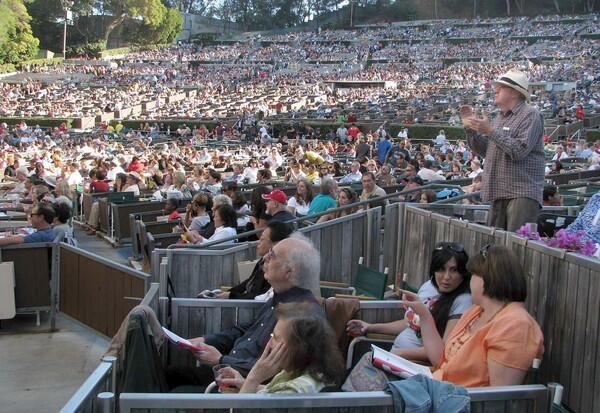
9: Age at which Lorin Maazel made his Bowl conducting debut in 1939. (As guest conductor, here he leads a rehearsal in 2010)
Dorothy Buffum Chandler: Civic leader whose emergency fundraising helped reopen the Bowl after a financial crisis closed it for nearly two weeks during the 1951 season. Chandler also is credited with beginning the tradition of in-seat picnicking in 1952. (Robert Gauthier / Los Angeles Times)

Muse of Music: Name of the granite figure by George Stanley (sculptor of the Oscar statuette) featured in the fountain built at the Bowl’s entrance in 1940.
100,000 gallons: Capacity of the reflecting pool installed near the stage in 1953 and later outfitted with a fountain, lights and other effects to produce water shows. The pool was drained in 1972 and has been replaced by seating.
20,000 ponchos: What the Bowl keeps on hand in case of rain. Weather has forced cancellation of about half a dozen shows.

‘’¡Bienvenido Gustavo!”: Free 2009 concert that marked Gustavo Dudamel’s first appearance on the podium as the Phil’s music director. (He made his U.S. debut at the Bowl in 2005.)
Fifth shell: Current structure –— created by design architects Hodgetts+Fung and executive architects Gruen Associates — that was unveiled along with an acoustic canopy and four viewing screens in 2004.
“1812 Overture”: Finale of the 1969 Tchaikovsky concert at which fireworks were introduced to the Bowl by then-general director Ernest Fleischmann. Now a popular feature of every season. (Lawrence K. Ho / Los Angeles Times)








